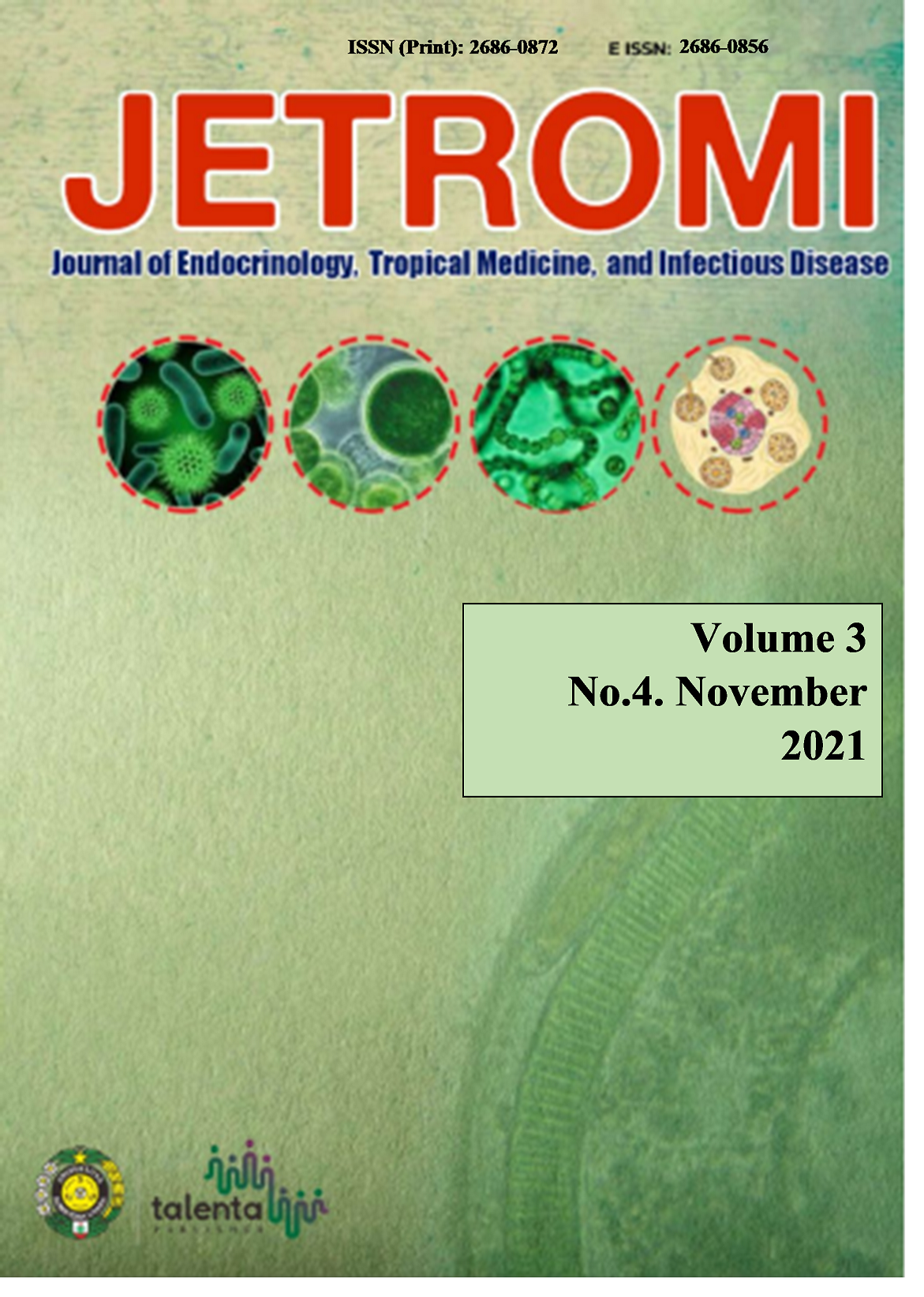Immature Platelet Fraction in Thrombocytopenic Patients
DOI:
https://doi.org/10.32734/jetromi.v3i4.7464Keywords:
IPF, Thrombopoiesis, Platelet, ThrombocytopeniaAbstract
Bone marrow puncture (BMP), is usually performed to identify thrombopoiesis activity and is still the gold standard to determine the etiology of thrombocytopenia. This diagnostic test is invasive hence it may cause discomfort to the patient. One of noninvasive test to determine the etiology of thrombocytopenia is by measuring immature platelet fraction (IPF). IPF is highly correlated to the activity of thrombopoiesis and by understanding the value, clinicians are able to use it in determining whether or not invasive examination is needed and more importantly avoiding unnecessary platelet transfusion. This research was a cross-sectional descriptive observational study aimed to evaluate IPF value in thrombocytopenic inpatients in the Department of Internal Medicine, Haji Adam Malik Hospital Medan. 83 people were recruited, 48 were female (57.83%) and 35 were male (42.16%). IPF values ranged 0,5-59,6% using Sysmex XN-1000 (reference range 1-4,8%). There were 5 (6.02%) low IPF values, 29 (34.93%) normal IPF values and 49 (59.03%) high IPF values. Evaluation of IPF in thrombocytopenic patients is a promising tool to discriminate central from peripheral thrombocytopenia.
Downloads
Downloads
Published
Issue
Section
License
Copyright (c) 2021 Journal of Endocrinology, Tropical Medicine, and Infectious Disease (JETROMI)

This work is licensed under a Creative Commons Attribution-NonCommercial-ShareAlike 4.0 International License.
The Authors submitting a manuscript do so on the understanding that if accepted for publication, copyright of the article shall be assigned to Journal of Endocrinology, Tropical Medicine and Infectious Diseases (JETROMI).
Copyright encompasses exclusive rights to reproduce and deliver the article in all form and media. The reproduction of any part of this journal, its storage in databases and its transmission by any form or media, will be allowed only with a written permission from Journal of Endocrinology, Tropical Medicine and Infectious Diseases (JETROMI).








